New York Times bestselling author F. Paul Wilson has always written weird books, and he plans to keep it that way. Read about what inspires him to write, and get excited for his newest stand-alone thriller novel Double Threat, on sale June 29th, 2021!
By F. Paul Wilson
Years ago I remember an interviewer asking Stephen King something like: “Why do you write this kind of stuff?” His answer: “What makes you think I have a choice?”
I pumped a fist, saying, “Yes! Perfect!”
Because his answer was so, so true. We don’t choose our genres. As with so many other things, we come prewired for certain kinds of fiction. The genres choose us.
Me? I’m wired for horror and the weird.
The first inkling I had that I was born for the weird and horror was when seven-year-old me saw the trailer for The Beast from 20,000 Fathoms. It opened with an atomic explosion, glimpses of this saurian monster in the arctic, and then scenes of a huge dinosaur rampaging through downtown Manhattan – the city just a few miles away across the Hudson from our North Jersey home, the place where my father worked.
You’ve seen the face-hugger from Alien? That was little me against the TV screen. I had to see this movie. My fellow second graders thought it would be cool to go, but I felt as if my life depended on it. My folks, however, said no. This was summer and polio season (the Salk vaccine would not be available for two years yet) and no way were they letting me sit in a stuffy theater crowded with other kids. (Shades of the COVID pandemic, right?) When I threw a fit they asked me if I was really willing to risk ending up in an iron lung just to see some monster movie? My “Yes!” was instantaneous.
But they held firm until I came up with a work-around: a drive-in theater. So my father relented and took me and my brother one night to the Toms River Drive-In where I watched breathlessly, totally captured. I even sympathized with the poor misunderstood rhedosaurus. I was hooked for life.
When I started writing (and collecting rejection slips), I wrote science fiction instead of horror. The market for my first love, horror fiction, did not exist in the 70s. Yes, you could occasionally sell an original horror tale to Bob Lowndes’s reprint magazines (which both King and I did in our early years) or now and then to one of the men’s magazines, and of course you had Stu Schiff’s Whispers, but a prozine specializing in horror did not exist. An Ira Levin or a William Peter Blatty could publish a major horror novel, but they were exceptions to the publishing zeitgeist back then.
So I settled for my second love. SF has weird elements, true, but not enough to fully satisfy me. I kept sneaking in horror wherever I could. My first sale to John Campbell’s Analog (“Ratman”) included a scene with a man eaten alive by rats. And certainly “The Tery” in Dell’s Binary Stars novella series was loaded with horror.
But by the end of the 70s, King’s successes with novels like Carrie, ’Salem’s Lot, and The Stand had opened the door and proved to publishers that people out there wanted to read horror. I decided it was my turn. By that time I’d had three SF novels published in hardcover and paperback. I’d learned the ropes. Time to tackle horror.
I looked at the field and saw how most people were doing variations on Carrie and ‘Salem’s Lot – small-town, narrow-focus horror. I did then what became a recurring approach to my storytelling: Check out what everyone else is doing, then turn it on its head. Instead of telling another small-town story, I decided to go widescreen, travel back to 1941 and set my tale against the backdrop of impending world war. I’d been reading a lot of Robert Ludlum and liked the paranoia/trust-no-one motifs weaving through his novels. I’d also developed a love of cosmic horror. Someone once said the international thriller had a one-night stand with cosmic horror and conceived The Keep. I can’t argue with that. It became an international bestseller and the source of an incomprehensible film by Michael Mann. It hasn’t been out of print since.
By the mid-80s I’d made something of a name for myself in horror with The Keep and The Tomb hitting the NY Times and other bestseller lists. That was when I began getting the kind of questions that reporter asked King: What drives you to write this weird stuff? I never had a good answer until I heard King’s. That became my answer as well: I don’t have a choice.
Friends and family were a little more direct, especially my mother who was put off by the Grand-Guignol grotesqueries of Black Wind and Reborn and Reprisal. “When are you going to write something nice?” she’d say.
Nice? Really, Mom?
So I tried to do nice. Once. I truly did. If you’ve read Crisscross, you know what a dark book it is. If you haven’t, let’s just say I pushed the anti-hero motif to the limit with my guy Jack, making him commit coldblooded first-degree murder (okay, the victim was a sadistic, murderous sleazeball, but still) and frame another killer for it. I finished it in 2003 and needed an anodyne for all the darkness and violence I’d just committed to paper.
So I decided to write a light, cozy mystery about a young female family doctor practicing in a small suburb of Baltimore. She and her deputy sheriff pal – her old high-school crush – would investigate a suspicious death and, after suitable red herrings, identify the murderer. It came in at a sleek 75 thousand words… and simply didn’t work. At least not for me. Something was missing. So I put it aside and moved on to the next Repairman Jack novel on my contract.
I retired from my own medical practice just in time to go into lockdown for the COVID pandemic. With all that extra time on my hands, I pulled out my old cozy and reread it. After sitting on my hard drive for nearly two decades… it still didn’t work. So I added a ghost with a dark secret and voila! It all came together. I liked it so much I wrote a sequel which, before I realized it, took an even darker turn.
This proved to me that I can’t write without a weird element. I’m not wired for straight, mimetic fiction. I need some element unavailable in the real world to get my head into it and start the juices flowing.
Like my latest, Double Threat: It starts off weird in its opening scene as some strange thingy drops off a cave ceiling onto a con artist’s head; things grow progressively weirder as Daley finds she’s sharing her body with a mouthy symbiote whose moral standards exceed her own (which, admittedly, isn’t saying much). And it zooms off the weirdness graph when she’s murdered.
So now when I hear something like, “Why don’t you write something nice?” I refer them to Tina Turner’s intro to Proud Mary.
You know, every now and then I think you might like to hear something from us nice and easy. But there’s just one thing. You see, we never ever do nothing nice, easy.
That’s me. Don’t expect nice and easy from me. Ain’t gonna happen. Can’t help it. I wasn’t born that way.
Pre-order Double Threat—available on June 29, 2021!

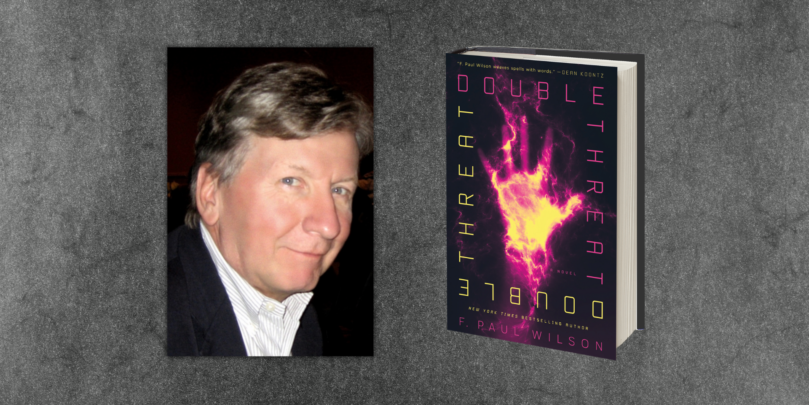
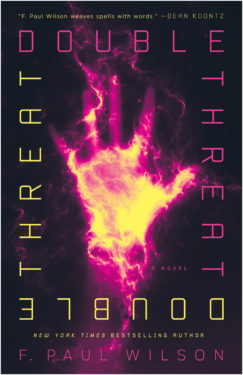





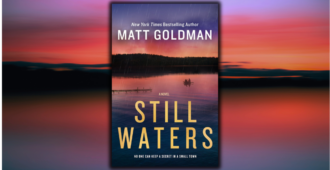

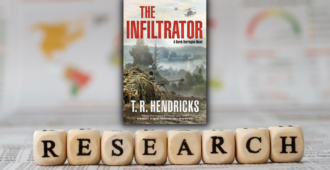
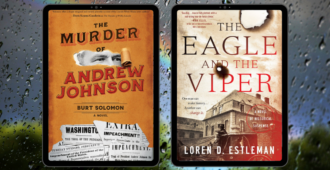
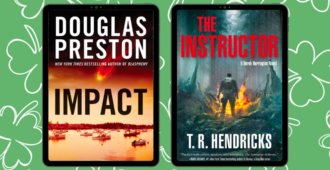
Double Threat: I remember reading a old syfy novel with very similar happening with an entity falling on a guy’s head and he survived the outcome where 99% would have died. Also the symbiont would study at night while the guy slept and could cure any problems with the host I don’t remember the title of the novel.
Are you thinking of F. Paul Wilson’s 1976 novel, “Healer”? I haven’t read “Double Threat” yet, but I have a suspicion that it’s the same symbiote, because many of his books (spanning decades if not centuries) seem to share a universe. 🙂